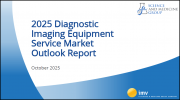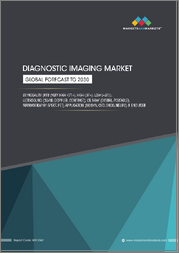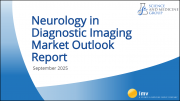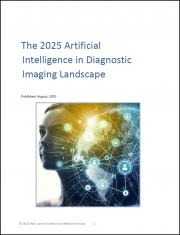
|
시장보고서
상품코드
1836539
독일의 영상 진단 시장 : 점유율 분석, 산업 동향, 통계, 성장 예측(2025-2030년)Germany Diagnostic Imaging - Market Share Analysis, Industry Trends & Statistics, Growth Forecasts (2025 - 2030) |
||||||
독일의 영상 진단 시장 규모는 2025년 37억 5,000만 달러로 추정 및 예측되어 예측 기간 중(2025-2030년) CAGR은 5.29%로 확대되어, 2030년까지 48억 5,000만 달러에 달할 것으로 예측되고 있습니다.

독일은 유럽에서 가장 큰 헬스케어 경제국입니다. 1,874개의 병원이 방사선 장비를 새로운 데이터 백본에 연결하고 인공지능(AI) 소프트웨어가 근본적인 방사선과 의사 부족을 보완하기 때문에 기술 도입이 가속화됩니다. 인구 역학의 압력이 수요를 확대합니다. 독일의 65세 이상의 인구는 증가하고 있으며, 종양학과 심장학의 검진 건수를 밀어 올려, 기기의 꾸준한 갱신 사이클을 지지하고 있습니다. 민간 영상 진단 체인의 통합과 병원의 용량 축소에 의해 경쟁은 격화되고 있지만, 의료기기 규제(MDR)에 의한 규제 장벽은 견고한 품질 프로세스를 유지하는 벤더에게 보답하는 것입니다.
독일 영상 진단 시장 동향과 통찰
만성 질환의 부담 증가
암, 당뇨병, 심혈관 질환의 유병률이 상승하여 시장 전체에서 장기적인 화상 수요가 확보되고 있습니다. 연간 4,666명이 새롭게 자궁경부암으로 진단되고 HPV-16/18 감염이 침윤성 종양의 76.5%를 차지하기 때문에 정밀한 스크리닝이 필수적입니다. 유방 조영술의 감도는 전국에서 69.9%에서 71.7%로 병변의 검출을 향상시키고 위음성을 줄이는 AI를 활용한 기능 강화의 필요성을 강조하고 있습니다. 만성 질환의 치료 경로는 현재 장기 영상 진단에 의존하고 있으며 장비의 정기적인 업그레이드가 필요합니다. 따라서 병원과 외래센터는 영상처리 하드웨어를 재량자본이 아닌 수익을 지키는 인프라로 간주하고, 경기변동이 큰 시기에도 안정된 수주를 강화하고 있습니다.
첨단기술 채용 확대
40억 유로의 Hospital Future Fund는 AI, 상호 운용성, 클라우드 아키텍처를 통합한 디지털 인프라 구매를 가속화합니다. DigitalRadar가 1,624개의 병원을 벤치마킹한 결과, 디지털화의 평균 점수는 33.3/100이었고, 상당한 업그레이드의 여지가 있음이 밝혀졌습니다. Philips의 HealthSuite 클라우드 이미징 플랫폼과 NEXUS/CHILI와 deepc의 판매 제휴는 확장 가능한 AI 파이프라인이 이제 조달에 영향을 미친다는 것을 뒷받침하고 있습니다. 의료기관이 첨단 양식을 채택하는 것은 단순히 화질뿐만 아니라 2024년 Digital-Gesetz에서 의무화된 전자 의료 기록과의 원활한 데이터 교환을 위한 것입니다.
방사선량에 대한 우려와 규제 강화
독일의 Strahlenschutzverordnung은 연간 복용량 제한을 시행하고 각 검사마다 정당성과 최적화를 요구하기 때문에 의료 기관은 자동 복용량 추적 기능을 갖춘 고급 스캐너를 도입하는 경향이 있습니다. Siemens Healthineers의 포톤 카운팅 CT는 진단의 충실성을 유지하면서 저선량 성능을 통해 공급업체가 차별화하는 방법을 보여줍니다. 컴플라이언스 준수는 특히 통합된 인포매틱스가 없는 설비의 경우 비용과 운영의 복잡성을 초래할 뿐만 아니라 가치가 낮은 적응증의 검사 빈도를 줄일 수 있습니다.
보고서에서 분석된 기타 촉진요인 및 억제요인
- 조기 진단을 요구하는 인구의 급속한 고령화
- 농촌에서의 원격 영상 진단 보급을 위한 정부 보조금
- 고가의 장비 비용과 상환 격차
부문 분석
X선은 2024년 독일 영상 진단 장비 시장 점유율의 27.26%를 차지했습니다. 이는 모든 병원이 외상이나 흉부 루틴 검사에서 X선 촬영에 의존하기 때문입니다. 그러나 MRI는 심장과 신경 용도로 대수를 늘리고 있으며, 그 CAGR은 6.46%로 2030년까지 주요 성장 엔진으로 자리매김하고 있습니다. Siemens Healthineers는 인기 있는 1.5 테슬라 부문으로 Magnetom Flow 플랫폼을 확장하여 검사 시간을 단축하고 소개 적응을 확대하는 AI 대응 워크플로우 자동화를 추가합니다. GE Healthcare는 독일에 전용 센터를 건설하고, 테라노스틱스에 의한 PET/SPECT의 부활이 모더리티 믹스를 더욱 다양화합니다.
독일의 영상 진단 장비 시장은 현재 영상의 선명도뿐만 아니라 전자 의료 기록 및 인공지능의 의사 결정 지원과의 통합 방법에 따라 양식을 평가했습니다. 초음파의 채용은 응급 외래나 지방의 진료소에 영상 진단을 가져오는 핸드헬드 기기로부터 혜택을 받고, 유방 조영술은 디지털 검출기와 컴퓨터 지원 검출에 의해 프로그램의 감도가 향상되어 근대화가 진행되고 있습니다. 전반적으로, 모달리티 포트폴리오는 기본적인 서비스 수준을 보장하는 고처리량의 X선실과 진료 보상 증액을 획득하는 프리미엄 MRI실로 나뉘어져 제공업체의 유형에 관계없이 균형 잡힌 설비 투자 프로파일을 유지하고 있습니다.
2024년 독일 영상 진단장기 시장 규모의 80.21%는 고정 시스템이 차지했는데, 이는 대규모 시설에서는 처리량 효율에서 여전히 룸 기반 CT와 MRI가 지지되고 있기 때문입니다. 그러나 모바일 및 핸드헬드 시스템은 노동력 부족이 POC(Point of Care) 진단의 매력을 높이고 있기 때문에 CAGR 6.92%를 기록합니다. Siemens Healthineers의 SOMATOM On.site CT는 환자를 운반하지 않고 집중 치료실에서 촬영을 가능하게 하고, 기사의 시간을 절약하는 원격 조작 옵션을 제공합니다.
AI를 통합한 핸드헬드 초음파 진단 장치는 자동 측정을 수행하여 결과를 클라우드 아카이브에 직접 공유할 수 있습니다. 휴대용 스캐너는 고정 설비의 부품을 재사용하는 것이 아니라 오히려 보완되어 병원이 케이스 믹스의 변동에 맞추어 양쪽 카테고리를 구입하는 듀얼 트랙 조달 경향이 밝혀졌습니다.
기타 혜택:
- 엑셀 형식 시장 예측(ME) 시트
- 3개월의 애널리스트 서포트
목차
제1장 도입
- 조사의 전제조건과 시장 정의
- 조사 범위
제2장 조사 방법
제3장 주요 요약
제4장 시장 상황
- 시장 개요
- 시장 성장 촉진요인
- 만성 질환의 부담 증가
- 첨단 기술의 채용 증가
- 조기 진단을 요구하는 급속한 고령화
- 지방의 원격 영상 진단센터 전개에 대한 정부 보조금
- 민간 자본에 의한 영상 진단센터의 통합
- 전국적인 암 검진 프로그램의 확대
- 시장 성장 억제요인
- 방사선량에 대한 우려와 규제 강화
- 고액의 기기 비용과 상환 격차
- 방사선과의 부족에 의한 이용 부족
- 대규모 AI 트레이닝과 이미지 공유를 방해하는 데이터 프라이버시의 장애물
- 가격 분석
- 규제 상황
- 기술적 전망
- Porter's Five Forces 분석
- 신규 참가업체의 위협
- 구매자의 협상력
- 공급기업의 협상력
- 대체품의 위협
- 경쟁 기업간 경쟁 관계의 강도
제5장 시장 규모 및 성장 예측(금액)
- 모달리티별
- MRI
- 컴퓨터 단층 촬영(CT)
- 초음파
- X선(디지털 및 아날로그)
- 핵의학 이미징(PET/SPECT)
- 유방 조영
- 투시진단 및 C암
- 휴대성별
- 고정식 시스템
- 모바일 및 핸드헬드 시스템
- 용도별
- 순환기
- 종양학
- 신경학
- 정형외과
- 산부인과
- 위비뇨기과
- 기타 용도
- 최종 사용자별
- 병원
- 영상 진단센터
- 외래수술센터(ASC)
- 전문 클리닉, 기타
제6장 경쟁 구도
- 시장 집중도
- 시장 점유율 분석
- 기업 프로파일
- Siemens Healthineers AG
- Koninklijke Philips NV
- GE HealthCare
- Canon Medical Systems Corporation
- Fujifilm Holdings Corporation
- Agfa-Gevaert Group
- Esaote SpA
- Hologic Inc.
- Shimadzu Corporation
- SAMSUNG (SamsungHealthcare.com)
- Carestream Health
- Shenzhen Mindray Bio-Medical Electronics Co., Ltd
- Ziehm Imaging GmbH
- United Imaging Healthcare Co. Ltd.
- Neusoft Medical Systems Co. Ltd.
- Planmeca Oy
- Koning Health
- Guerbet SA
- Bracco Imaging SpA
제7장 시장 기회와 전망
JHS 25.10.28The Germany diagnostic imaging market size is estimated at USD 3.75 billion in 2025, and is expected to reach USD 4.85 billion by 2030, at a CAGR of 5.29% during the forecast period (2025-2030).
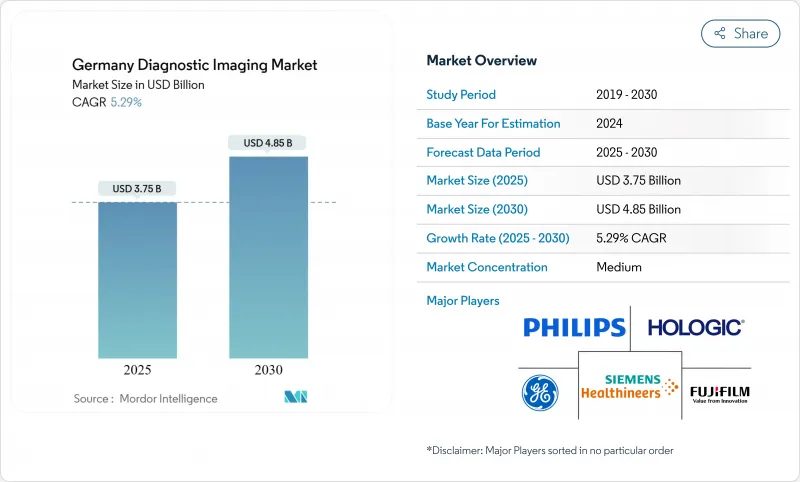
Growth builds on Germany's position as Europe's largest healthcare economy. Technology adoption accelerates because 1,874 hospitals now connect radiology equipment to new data backbones, while artificial-intelligence (AI) software offsets persistent radiologist shortages. Demographic pressure magnifies demand: Germany's population aged 65 and older continues to rise, pushing oncology and cardiology screening volumes higher and supporting steady equipment replacement cycles. Consolidation among private imaging chains and hospital capacity reductions intensify competition, yet regulatory barriers created by the Medical Device Regulation (MDR) reward vendors that maintain robust quality processes.
Germany Diagnostic Imaging Market Trends and Insights
Growing burden of chronic diseases
Rising prevalence of cancer, diabetes, and cardiovascular disease secures long-run imaging demand across the market. Cervical cancer illustrates the dynamic: 4,666 new diagnoses appear annually, and HPV-16/18 infections account for 76.5% of invasive tumors, making precise screening indispensable. National mammography sensitivity between 69.9% and 71.7% underscores the need for AI-enabled enhancement that improves lesion detection and reduces false-negatives. Chronic-disease care pathways now rely on longitudinal imaging, securing recurring equipment upgrades. Hospitals and outpatient centers therefore consider imaging hardware as revenue-protective infrastructure rather than discretionary capital, reinforcing steady orders even during broader economic volatility
Increased adoption of advanced technologies
The EUR 4 billion Hospital Future Fund accelerates digital infrastructure purchases that integrate AI, interoperability, and cloud architectures. DigitalRadar benchmarking of 1,624 hospitals revealed a mean digitization score of 33.3/100, exposing significant upgrade headroom. Philips' HealthSuite cloud imaging platform and NEXUS/CHILI's distribution pact with deepc confirm that scalable AI pipelines now influence procurement. Institutions adopt advanced modalities not merely for image quality but for seamless data exchange with electronic patient records mandated by the 2024 Digital-Gesetz.
Radiation-dose concerns & stricter regulation
Germany's Strahlenschutzverordnung enforces annual dose limits that require justification and optimization for every examination, pushing providers toward premium scanners with automated dose-tracking. Siemens Healthineers' photon-counting CT illustrates how vendors differentiate through low-dose performance while preserving diagnostic fidelity. Compliance adds cost and operational complexity, especially for facilities without integrated informatics, and may reduce examination frequency for low-value indications.
Other drivers and restraints analyzed in the detailed report include:
- Rapidly ageing population demanding early diagnosis
- Government grants for rural teleradiology roll-out
- High equipment cost & reimbursement gaps
For complete list of drivers and restraints, kindly check the Table Of Contents.
Segment Analysis
X-Ray retained 27.26% of Germany Diagnostic Imaging Equipment market share in 2024 because every hospital relies on radiography for trauma and routine chest studies. MRI, however, is boosting volumes in cardiac and neuro applications, and its 6.46% CAGR positions it as the primary growth engine through 2030. Siemens Healthineers expands its Magnetom Flow platform in the popular 1.5 Tesla segment, adding AI-enabled workflow automation that cuts exam times and broadens referral indications. PET/SPECT resurrection through theranostics further diversifies modality mix as GE Healthcare builds a dedicated center in Germany.
The Germany Diagnostic Imaging Equipment market now values modalities not only for image clarity but for how they integrate with electronic patient records and AI decision support. Ultrasound adoption benefits from hand-held devices that bring imaging to emergency rooms and rural clinics, while mammography modernizes through digital detectors and computer-aided detection that lift program sensitivity. Overall, modality portfolios continue to split between high-throughput X-Ray rooms that secure baseline service levels and premium MRI suites that capture incremental reimbursement, sustaining balanced capital investment profiles across provider types.
Fixed systems commanded 80.21% of the Germany Diagnostic Imaging Equipment market size in 2024 because large institutions still favor room-based CTs and MRIs for throughput efficiency. Nonetheless, mobile and hand-held systems post a 6.92% CAGR as workforce shortages make point-of-care diagnostics attractive. Siemens Healthineers' SOMATOM On.site CT allows intensive-care imaging without patient transport and provides remote control options that save technologist time.
Hand-held ultrasound units embedded with AI now generate automated measurements and share results directly to cloud archives, aligning with Germany's digital-health reimbursement framework for telematics infrastructure. Portable scanners complement rather than cannibalize fixed installations, revealing a dual-track procurement trend where hospitals purchase both categories to match case-mix variability.
The Germany Diagnostic Imaging Market Report is Segmented by Modality (MRI, Computed Tomography (CT), Ultrasound, X-Ray (Digital & Analog), Nuclear Imaging (PET / SPECT), and More), Portability (Fixed Systems and Mobile and Hand-Held Systems), Application (Cardiology, Oncology, Neurology, and More), and End-User (Hospitals, Diagnostic Imaging Centres, and More). The Market Forecasts are Provided in Terms of Value (USD).
List of Companies Covered in this Report:
- Siemens Healthineers
- Koninklijke Philips
- GE Healthcare
- Canon
- FUJIFILM
- Agfa-Gevaert
- Esaote
- Hologic
- Shimadzu
- SAMSUNG (SamsungHealthcare.com)
- Carestream Health
- Mindray
- Ziehm Imaging
- United Imaging Healthcare Co. Ltd.
- Neusoft Medical Systems Co. Ltd.
- Planmeca
- Koning Health
- Guerbet SA
- Bracco
Additional Benefits:
- The market estimate (ME) sheet in Excel format
- 3 months of analyst support
TABLE OF CONTENTS
1 Introduction
- 1.1 Study Assumptions & Market Definition
- 1.2 Scope of the Study
2 Research Methodology
3 Executive Summary
4 Market Landscape
- 4.1 Market Overview
- 4.2 Market Drivers
- 4.2.1 Growing burden of chronic diseases
- 4.2.2 Increased adoption of advanced technologies
- 4.2.3 Rapidly ageing population demanding early diagnosis
- 4.2.4 Government grants for rural teleradiology roll-out
- 4.2.5 Private-equity consolidation of imaging centres
- 4.2.6 Expansion of national cancer-screening programs
- 4.3 Market Restraints
- 4.3.1 Radiation-dose concerns & stricter regulation
- 4.3.2 High equipment cost & reimbursement gaps
- 4.3.3 Radiologist shortage causing under-utilisation
- 4.3.4 Data-privacy hurdles hindering large-scale AI training & image sharing
- 4.4 Pricing Analysis
- 4.5 Regulatory Landscape
- 4.6 Technological Outlook
- 4.7 Porter's Five Forces Analysis
- 4.7.1 Threat of New Entrants
- 4.7.2 Bargaining Power of Buyers
- 4.7.3 Bargaining Power of Suppliers
- 4.7.4 Threat of Substitutes
- 4.7.5 Intensity of Competitive Rivalry
5 Market Size & Growth Forecasts (Value)
- 5.1 By Modality
- 5.1.1 MRI
- 5.1.2 Computed Tomography (CT)
- 5.1.3 Ultrasound
- 5.1.4 X-Ray (Digital & Analog)
- 5.1.5 Nuclear Imaging (PET / SPECT)
- 5.1.6 Mammography
- 5.1.7 Fluoroscopy & C-arms
- 5.2 By Portability
- 5.2.1 Fixed Systems
- 5.2.2 Mobile and Hand-held Systems
- 5.3 By Application
- 5.3.1 Cardiology
- 5.3.2 Oncology
- 5.3.3 Neurology
- 5.3.4 Orthopaedics
- 5.3.5 Obstetrics & Gynaecology
- 5.3.6 Gastro-Urology
- 5.3.7 Other Applications
- 5.4 By End-User
- 5.4.1 Hospitals
- 5.4.2 Diagnostic Imaging Centres
- 5.4.3 Ambulatory Surgery Centres
- 5.4.4 Speciality Clinics & Others
6 Competitive Landscape
- 6.1 Market Concentration
- 6.2 Market Share Analysis
- 6.3 Company Profiles (includes Global level Overview, Market level overview, Core Segments, Financials as available, Strategic Information, Market Rank/Share for key companies, Products & Services, and Recent Developments)
- 6.3.1 Siemens Healthineers AG
- 6.3.2 Koninklijke Philips N.V.
- 6.3.3 GE HealthCare
- 6.3.4 Canon Medical Systems Corporation
- 6.3.5 Fujifilm Holdings Corporation
- 6.3.6 Agfa-Gevaert Group
- 6.3.7 Esaote SpA
- 6.3.8 Hologic Inc.
- 6.3.9 Shimadzu Corporation
- 6.3.10 SAMSUNG (SamsungHealthcare.com)
- 6.3.11 Carestream Health
- 6.3.12 Shenzhen Mindray Bio-Medical Electronics Co., Ltd
- 6.3.13 Ziehm Imaging GmbH
- 6.3.14 United Imaging Healthcare Co. Ltd.
- 6.3.15 Neusoft Medical Systems Co. Ltd.
- 6.3.16 Planmeca Oy
- 6.3.17 Koning Health
- 6.3.18 Guerbet SA
- 6.3.19 Bracco Imaging SpA
7 Market Opportunities & Future Outlook
- 7.1 White-space & Unmet-Need Assessment




